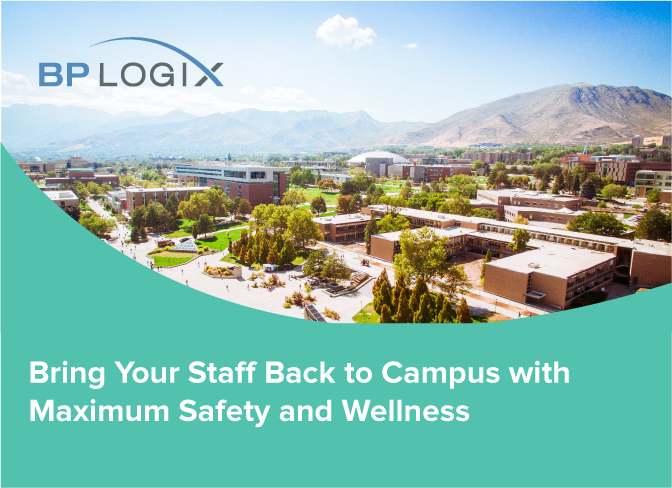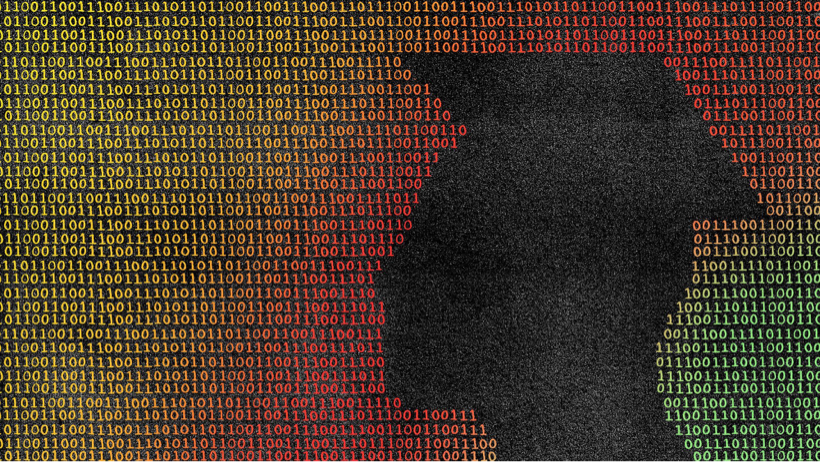A return to regular schedules is coming soon for many colleges and universities across the country as COVID-related restrictions are lifted and the fall semester approaches.
The transition is a welcome move for schools that had to rapidly adapt to a completely new learning environment in March and April. Students left campus, instructors learned how to teach in an online format, and administrators scrambled to create and deploy new processes and solutions.
But with schools getting ready to have hundreds or thousands of people back on their campuses, they must also develop healthy and safe ways to reintegrate faculty and staff. They need to be able to do so in a way that allows them the freedom and flexibility to perform their work, but also keeps them protected.
Schools must create and deploy a comprehensive reintroduction plan to prevent the spread of the coronavirus, while also addressing the fears and safety concerns of their staff. The foundation of this type of plan takes into account a variety of health and wellness factors, most of which can be implemented in an actionable way. There are also behavioral components that have to be factored in, and ultimately, creating and operating such a plan will take the efforts of university HR, IT, and administrative leaders.
An effective plan will go a long way in managing virus-related issues in the campus setting and will provide peace of mind and build morale for employees as they return to work.
Here are four general areas, and a variety of specific actions and considerations, that colleges and universities can take to ensure they are providing a safe and trusted working environment for their employees.
Establish On-site Guidelines
Large numbers of employees returning to a shared workplace all at once creates a major risk for the spread of viruses. Managing schedules, creating a framework for how they can interact, and operating with firm guidelines on social distancing are all critical for protecting employee health at work. Colleges should identify a path that balances productivity with flexibility, and includes at least some elements of the following:
Flexible work options: some jobs simply don’t need to be performed on-site, and employees in those roles should be encouraged to continue working remotely as much as possible. A good rule to follow is: if in-person interaction is not needed for an employee to successfully execute her job, she should remain at home. Additionally, to reduce the number of people on campus at any one time, work schedules should be staggered into shifts.
Facilities and maintenance: it’s important to prepare facilities to be clean. All campus buildings must have efficient, clean air filtration systems which may require significant infrastructure improvements, but will also have a major impact on reducing the spread of the virus. Buildings, classrooms, and all physical elements of the school will need to be cleaned on a regular basis. There is also a need for seating arrangements in classrooms, meeting rooms, and other common areas that keep people at a safe distance from one another.
Hygiene practices: social distancing should be mandated and reinforced, and to do this, reminders of effective hygiene need to be available everywhere. This should include having things like hand sanitizers and cleaning stations throughout each building, and schools should provide masks, gloves, and disinfect wipes for phones, computers, door handles, and everywhere people are touching.
Responsiveness: managers cannot be afraid to act quickly to send employees home who display signs of illness, or even close offices if they’ve been inhabited by someone who has been sick.
Restrict travel: school leaders should mandate that only essential travel is permitted for employees who must attend school-related activities. As much as employees like traveling to conferences and industry events, schools need to take a break from those for the coming semester (and possibly beyond). For individuals who travel on planes, trains, or busses for personal reasons, it’s important that they quarantine for a safe period before returning to the workplace.
Encourage Well-being
College HR and health departments should prepare programs that support the emotional and mental health wellness of employees as they get back to work. These are as important as physical health concerns, and doing so will reduce disruptions in productivity, they will also create an environment where employees feel safe and trusted.
There are so many ways for schools to help employees stay balanced and to avoid stress. Consider some options that can have a huge impact:
Watch for signs: Everyone should be given some form of training to recognize signs of depression and anxiety in themselves and others. Many employees have been isolated for a long period of time, and coming back into the workplace at a time when there is still a great deal of uncertainty can add to their stress. Encourage people to watch out for others and demonstrate compassion. In general, an organization that cares for its people will ultimately be rewarded with happier, healthier employees.
Be a resource: HR teams should communicate information on any mental health benefits provided in your school's health insurance. It would also be helpful to email regular reminders, and display signage that reminds people both to social distance, but also to care for themselves. Any programs that support employee efforts to maintain emotional health should be communicated and supported.
Create a community environment: Support groups and opportunities for employees to voice concerns are important vehicles for employee wellness. While still practicing social distancing, it would be helpful to organize groups for people with various interests. Some will be parents struggling to get back to balancing kids and work, others may be caring for a sick relative. Having a sense of support through a work community can help employees handle the many issues they are facing as they reintegrate.
Communication and Training
Effective ways to enable employer-to-employee and employee-to-employee communication are going to be critical to keeping the workplace safe. This will help schools reinforce policies, but will also help avoid confusion at a time of change. Some of these efforts can piggyback on existing programs, while others will require new efforts:
Training: Whether it’s through regular email communication, an employee manual, or through an employee portal, you will need to train employees on a detailed and comprehensive set of guidelines about things like:
- Expected health practices like hand washing, use of disinfectants, and other things that employees will need to begin regularly doing.
- Work hours and schedules. Since you will likely have some form of staggered scheduling and work from home policies, these will need to be spelled out clearly and with corresponding expectations.
- Social distancing reminders cannot be emphasized enough, and a codified training will do a lot to establish important, necessary habits in employees about safe contact.
- Employees need training about when to stay home, what to look out for when feeling under the weather and what to do if you feel ill when at work.
All-hands meetings: Interactive town hall meetings are an excellent forum for employees to hear from management about decisions being made that will impact how they work and will educate them on factors related to their health. These should be done regularly (even weekly) so that employees feel they are in the loop and have a voice. Include options to broadcast via video calls for employees working at home.
Use a standard communication platform: Tools like Slack or Google Hangouts can help employees stay connected in real-time. These give them the ability to communicate among one another (which also reduces the need for face-to-face interaction), and it allows for management to deliver news and alerts rapidly.
Flexible Processes
One of the keys to successfully navigating the new normal is through flexibility. No one knows what the coming months will bring, and campus leaders must be aware that they are asking a lot of their employees to be back at work. As such, certain rules and guidelines must be followed, but they must also make allowances for the fact that much can change rapidly. Being cognizant of when to change, and then operating in an environment where change can be implemented are essential ways to approach reintegration. It also gives employees assurances that campus leadership is being responsive to health and safety needs.
Be prepared for productivity swings: Managers must be comfortable knowing that productivity may suffer at times while employees adapt to new ways of working. While goals need to be maintained, being flexible in the face of change will enable teams to set appropriate objectives, but be able to re-scope those plans if they need to be changed.
Technology solutions will need to adapt: In a normal environment, IT support staff are able to meet face-to-face with employees who need a laptop fixed or have problems with their workstation. But now that most support is done over the phone and through digital means, it may mean supporting employees in a different way. Rather than go through normal acquisition processes, some schools are doing things like ordering and shipping laptops and monitors directly from Amazon to employees who need them. Always remember that serving employees to make them productive and feeling supported is the goal.
Employee support: Many will be facing unique challenges in their lives, and they will not be very effective at work unless they have the help required to handle the issues they face. HR teams should create shortcuts to help employees gain access to medical benefits, financial counseling, and other types of support that will enable them to navigate a challenging time for themselves and their families.
How schools return to work is as important as when they return. Looking out for students and the myriad services offered to them is core to the mission of all schools, but without the backbone of the staff and faculty, no school can operate effectively.
COVID-19 has disrupted the world, but it also offers colleges and universities an opportunity to transform the higher education workplace. The steps taken now will be critical for the success of hiring and managing employees in the future; we simply cannot know what lies ahead in the coming months and years, but by starting with the health and well-being of employees, schools can be assured that they have the right foundation for sustainable success.



